Let’s start with our title: “6 questions to create an ideal fire pit.” What is ideal??? An ideal fire pit means what’s right for YOU. We don’t believe in cookie-cutter designs around here, and every home is different. These tips will help you figure out what would be the ideal fire pit at your home.
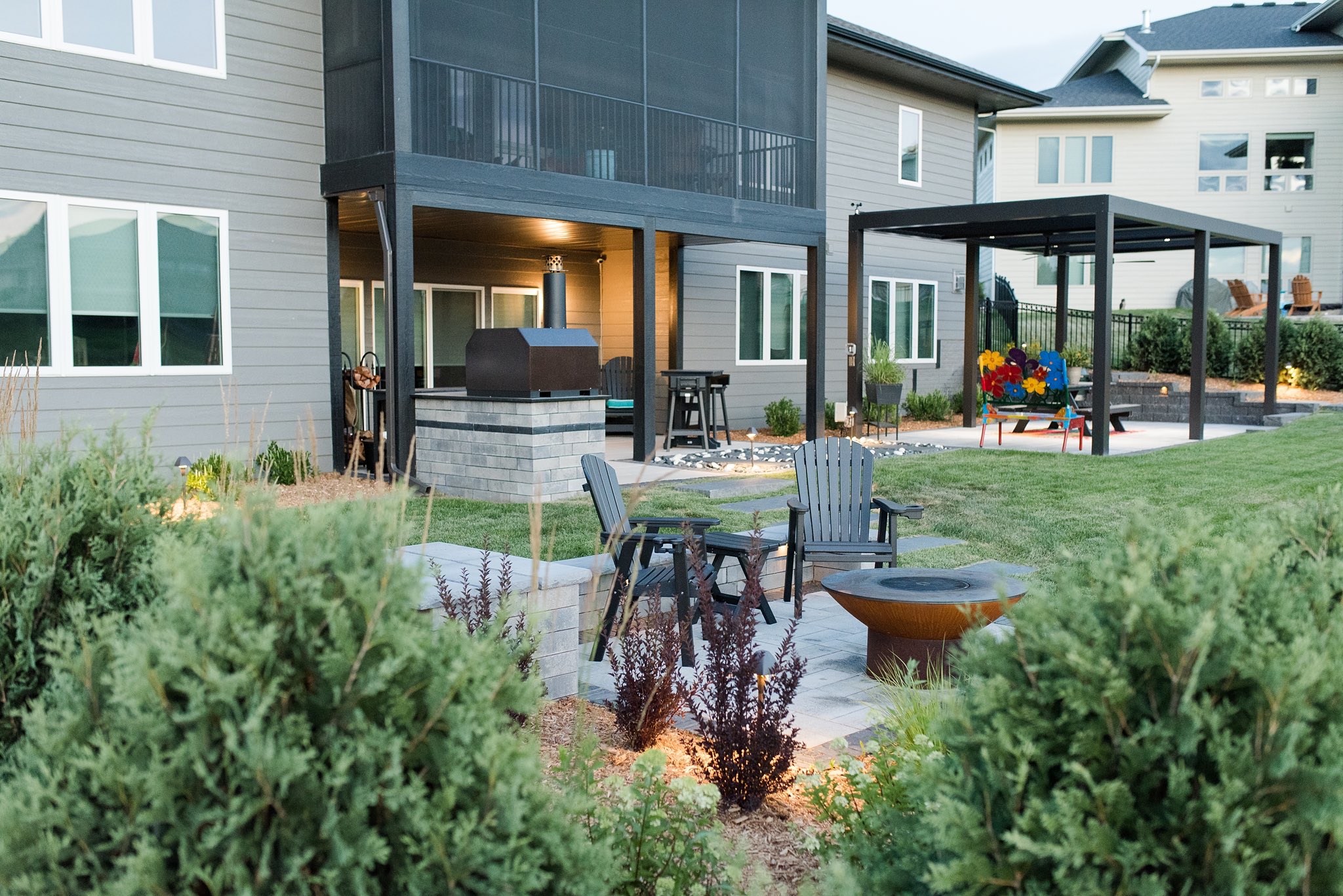
- Are you safe?
To be clear: We are not safety experts, and you should check with your municipalities’ codes for planning any fire pit. Common sense goes a long way. Here are the things that we think about during the design process and communicate with our clients:
- No matter what type of fire pit you’re using, make sure you are at least 10 feet from all buildings, fences, plants and any overhang.
- Place your fire pit on a fire-resistant surface. Stone, concrete pavers, brick and are your best choices. A fire -resistant mat on a deck is a short-term option, but not best forever and may not be up to code. Check first!
- Keep a fire extinguisher and/or hose nearby.
- Don’t leave the fire pit unattended, and don’t let your kids get crazy. It is SO tempting to put all kinds of things in and watch them burn!!! I totally get it. Stay on your toes to keep everyone safe.
- Think through lighting. Have enough to safely put out the fire and move around without tripping. String lights (not directly over the fire pit) bring great ambiance. Under-lights under seat walls highlight trip hazards.
- Clear debris, leaves, and grass from around the fire pit. We don’t want stray sparks taking flame. In Iowa, we don’t have the same issues with fire that we’re seeing in the far west, but it is important to be responsible.
- Check for UL listing or another safety and quality testing on your gas fire pit, to ensure safety.
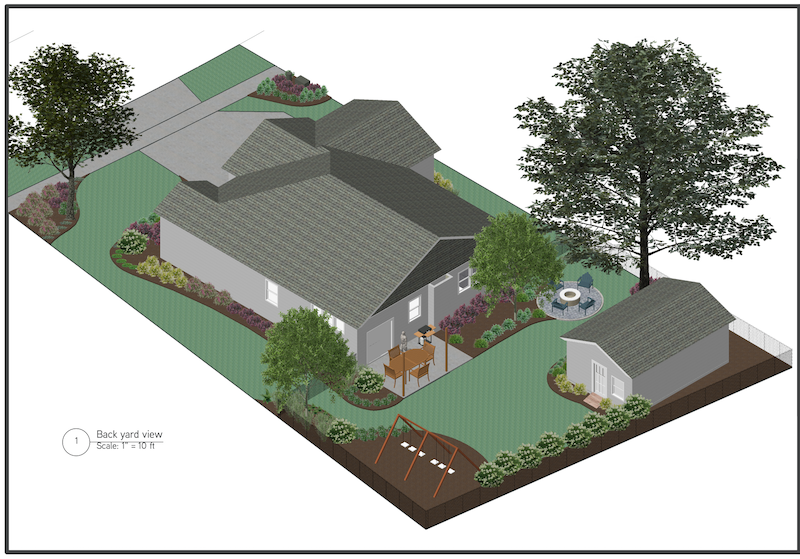
This design above has the fire pit off the house just a bit, creating a separate destination from the covered dining patio. A built-in OR free-standing fire pit would work great here. The design below shows another patio with the option for a free-standing or built-in fire pit.
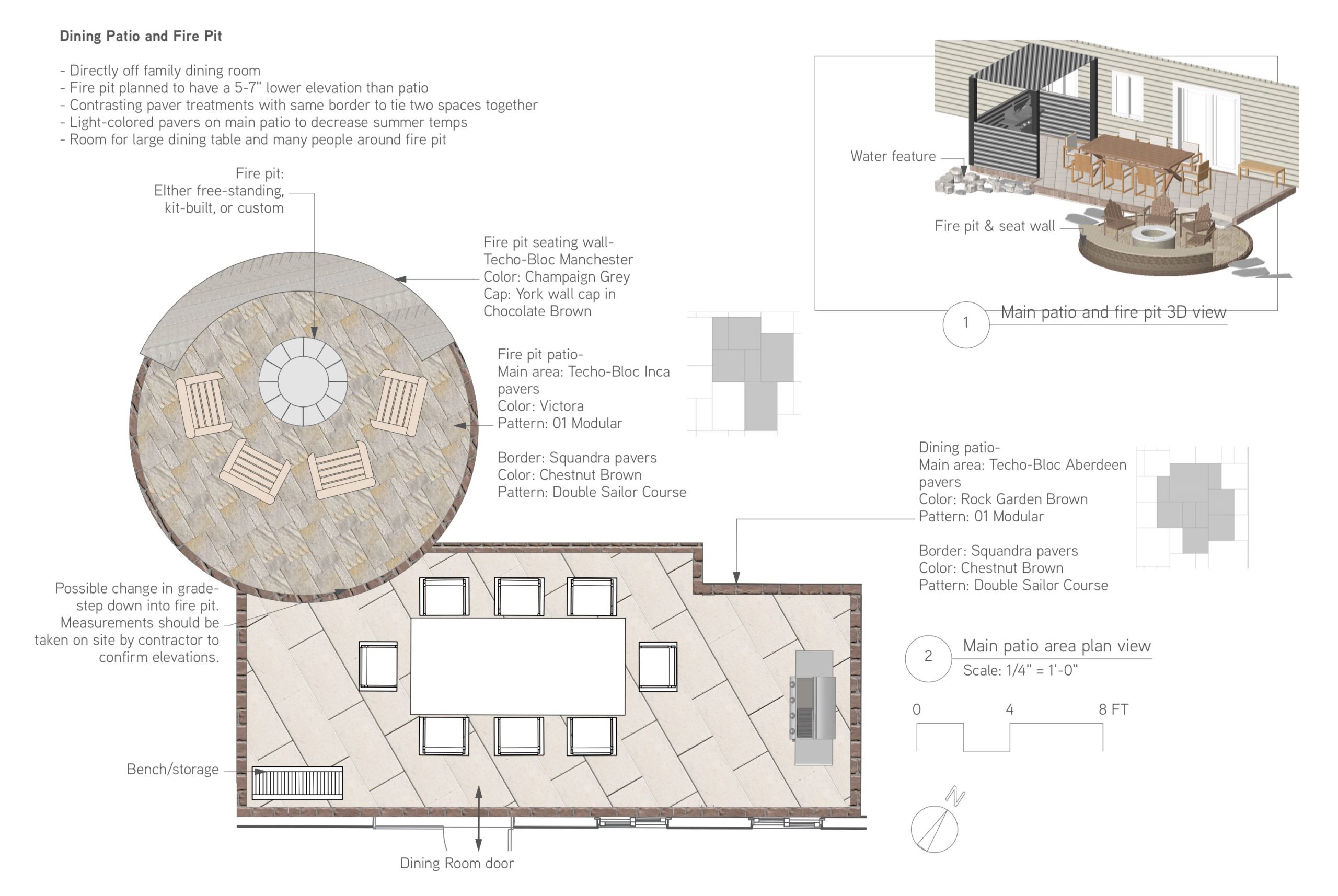
- Should you use free-standing or built-in?
What’s the difference? A free-standing fire pit can be moved around. It’s not attached anywhere. A built-in fire pit is not mobile and can’t be relocated.
So which one should you choose? Price is one way to decide. Mobile fire pits are definitely cheaper to purchase compared with a built-in option. You still get what you pay for, though: we opted for a relatively cheap, “copper-look” freestanding fire pit from a box store and melted the grate on our first fire. Other than the grate it’s held up well. Many quality mobile fire pits can still cost anywhere from $200-800.
Free-standing fire pits offer options and ease. Cleaning is easier because you can just dump out the ashes, rinse it out, and start fresh. They’re often smaller in size than a built-in fire pit, so they may fit better in urban backyards and smaller patios. You can find all kinds of shapes and designs to choose from.
One limitation with a free-standing fire pit is that most are wood-burning. You can find some options that use a propane tank, but that leaves you with a big tank to deal with.
Built-in fire pits are an investment that should have a good ROI down the line. Homebuyers are looking for outdoor living options, and fire pits are at the top of the list. A fire pit patio can become an outdoor room, a destination and a focal point in your yard. Integrating the fire pit into your patio with seating walls, steps and different elevations will create a cohesive outdoor space. We love designing fire pit patios! Check out some projects that include them here, here, and here.
A built-in fire pit is always ready to use. Gas pits can be started at the touch of a button. Wood fire pits can be set up and ready to go. While I love complex patio designs that include fire pits, I ALSO love a simple DIY option. My favorite these days is an old tractor rim set in a pea gravel patio. Pinterest has endless DIY options to look through – check out our Fire Pits and Outdoor Fireplaces Pinterest board.
I recommend starting with a free-standing pit and using it in a few places around your yard to see what works best before committing to a built-in option.
- Should you go gas or wood?
This is mostly a matter of preference. We work with clients that use both gas and wood to heat their fires. Personally, I don’t think there’s anything to compare with the scent, sound and visual impact of a wood fire. That said, I also hate the smell once the fire’s over and always have to change my clothes! Gas fires don’t have the crackle of a wood fire, but they also don’t linger on your clothes and in your hair. This is also important for people with allergies and sensitivities to smoke.
Wood fires hit on all your senses. They have a primal feeling and draw you in. Wood fires are homey and inviting. There is the added benefit that you can make the fire as big or as small as you like.
You definitely have control with a gas fire, but it’s a different control. The ease and instant gratification of a gas fire leads many of our clients to choose gas. However, the ambiance of a wood fire can tip the scales the other way.
Other thoughts comparing the two options:
- Wood fire pits have ash to clean up. Cover the pit when you’re not using it so that the ash doesn’t become sludge. Better still, clear out the ash after each use. Save and compost it. Gas pits don’t have ash to deal with.
- Keep stored wood covered so that it’s always ready to go.
- Gas fire pits offer many options for filler across the flame. You can choose from glass rocks, faux logs, and lava rock in many colors. This is an important way to fit in the style of your patio.
- A third option is a gas-starter for your wood fire pit for more instant flame.
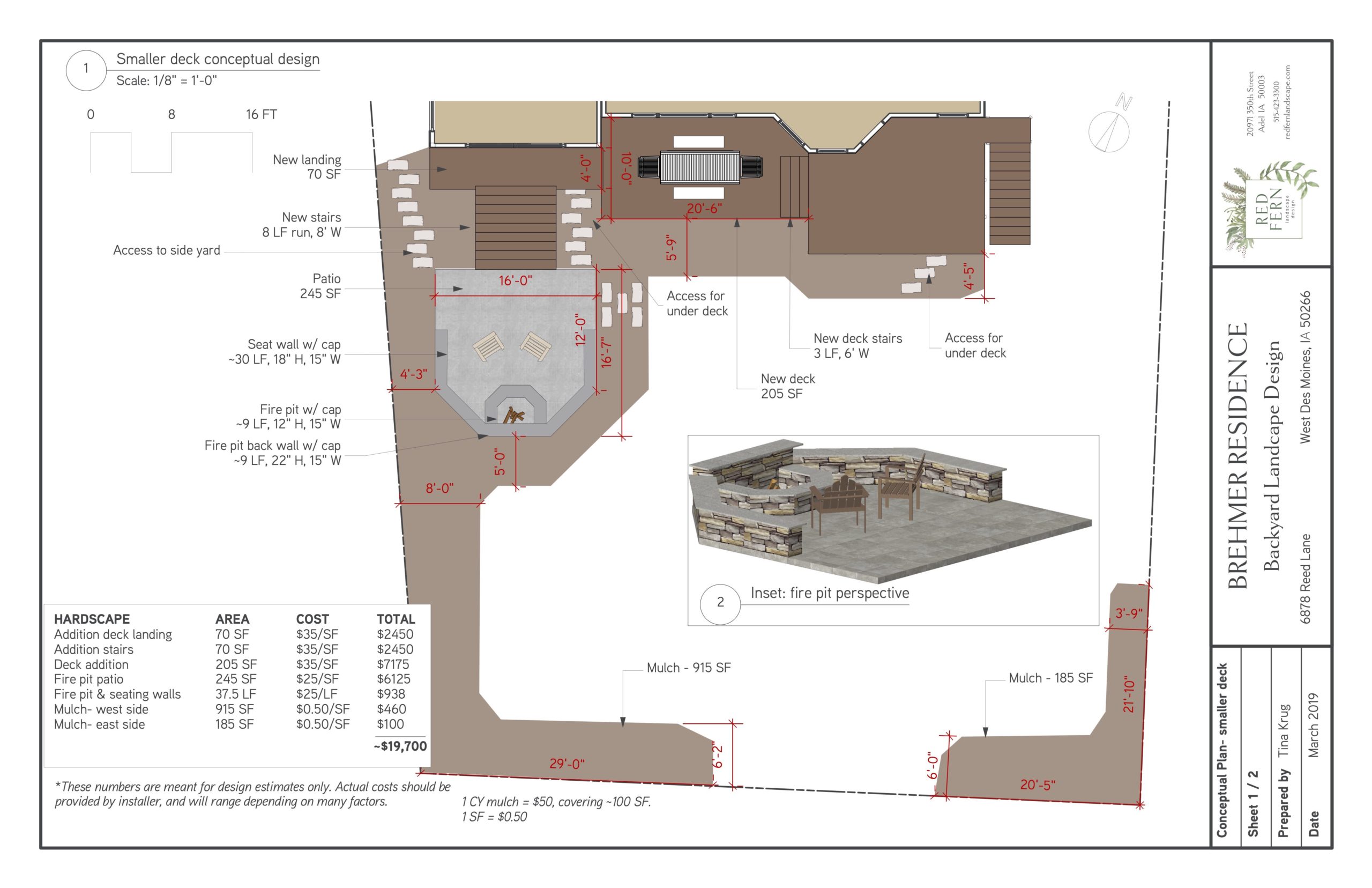
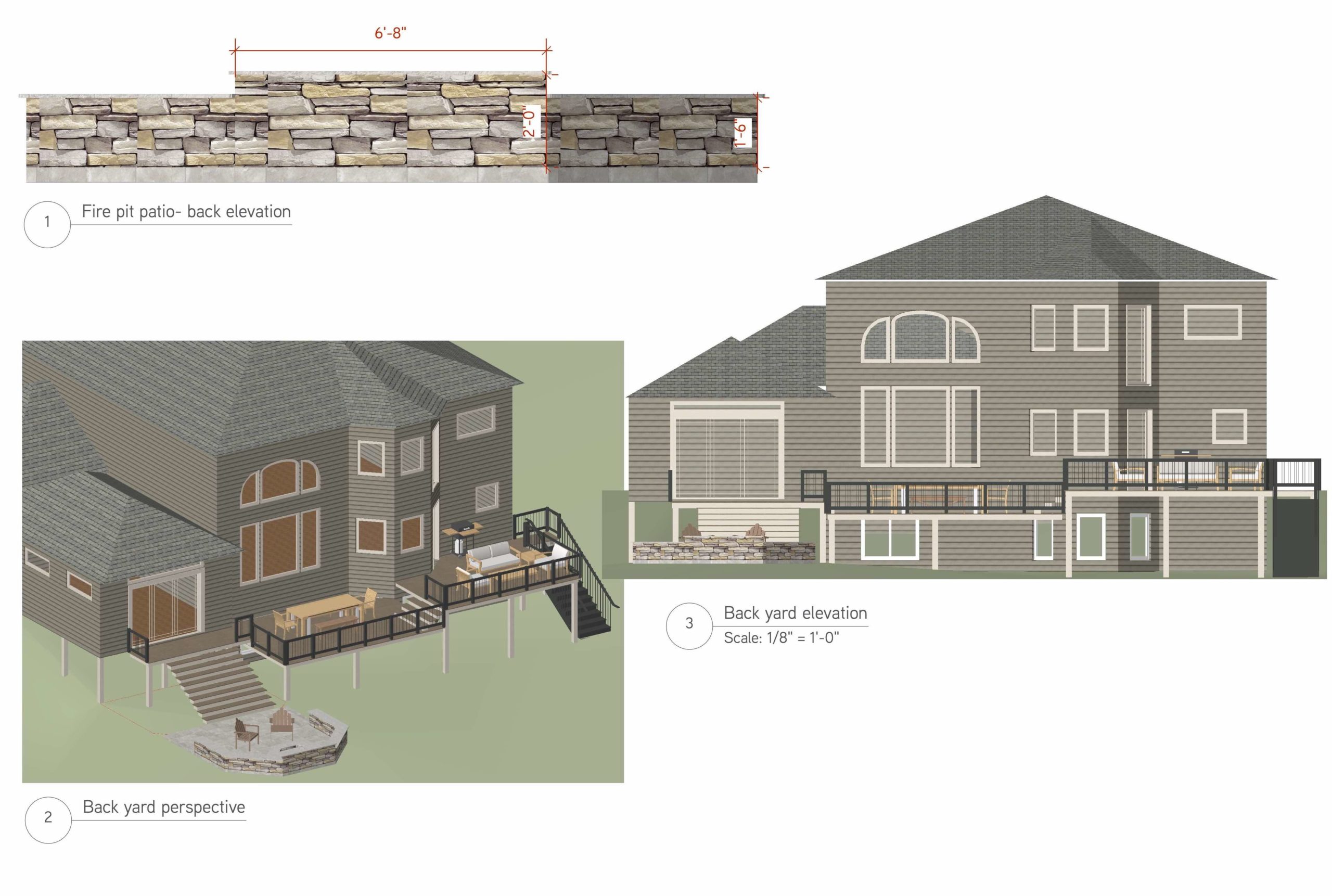
- Have you thought through storage?
Where are you keeping the essentials? This one is a big one for me. I love a wood fire pit, and when I design for clients I always make sure we build in a space for wood storage. Dry wood is non-negotiable. If you don’t have a built-in covered space, look into a wood stand or other option.
S’mores sticks and other cooking utensils – do you have space planned for these? I consider s’mores non-negotiable too, and I don’t want to keep dirty fire utensils in the house. We keep our fire pit utensils with our grill tools, and I’ve designed an outdoor caddy for fire tool storage. If you’re using a patio with a seating wall, add a storage area under the seat wall for your tools.
Cushions, chairs, blankets and other comfy options – Where will these be? Deck boxes are great options to store soft things when you’re not using them. Having a pillow or cozy blanket that already smells a bit like smoke will save your other home décor. Use a deck box or other secured storage bin so that you don’t deal with mice.
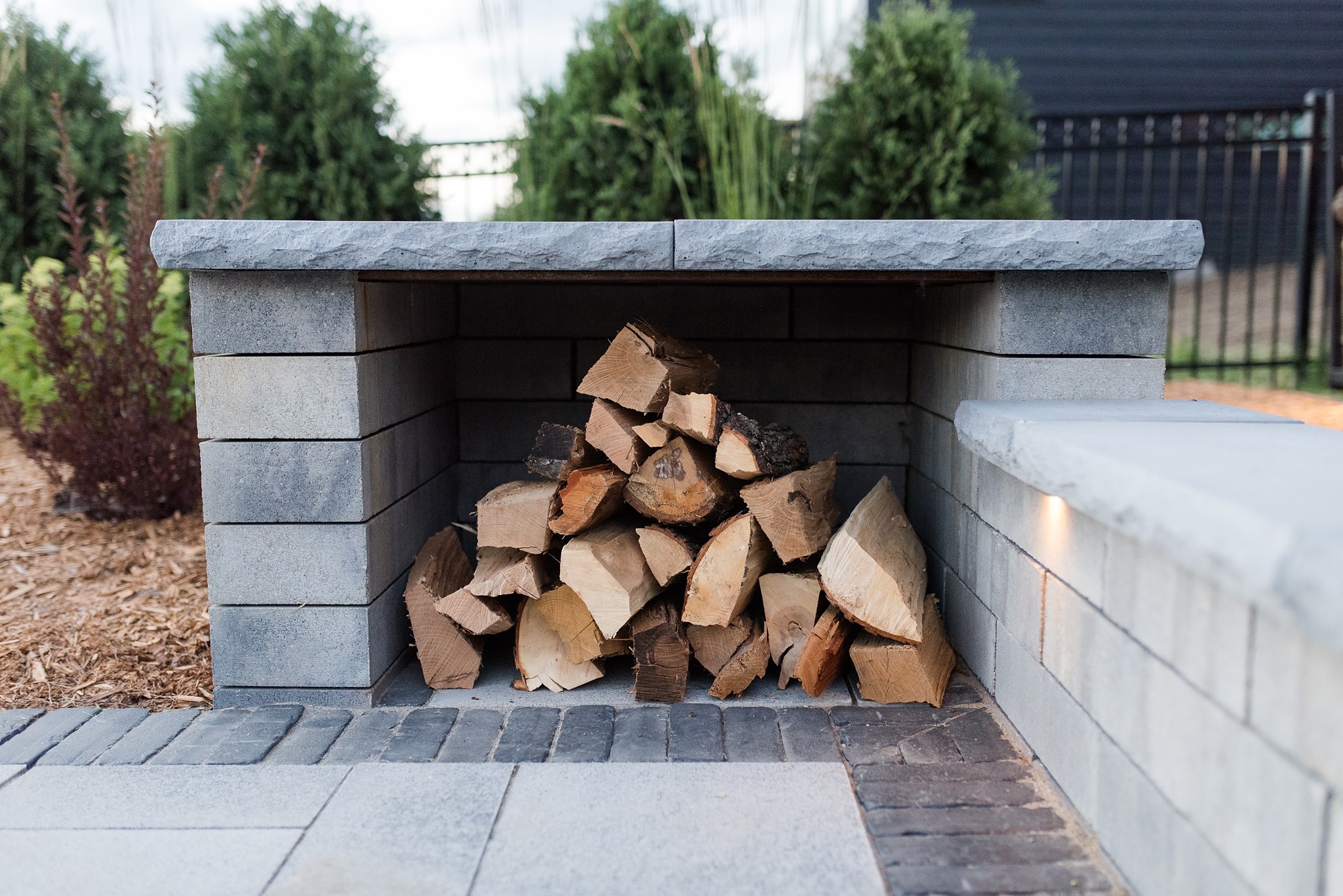
- Is seating taken care of?
I think a lot of the time, clients don’t consider how many people will gather around the fire. If you’re an average family with 2.5 kids, and just one of your kids has a friend and their family come over – you’re almost up to 10 people! Fire gathers people together: expect a crowd. Not all the time, sure, but it will happen.
You want enough seating to accommodate everyone. Start with who will normally use the fire pit and then think about parties and special gatherings.
I love including a seat wall in fire pit designs when I can. This adds extra seating when many people gather, and creates cozy inclusion when you’re sitting in front of it. It is the perfect flexible plan.
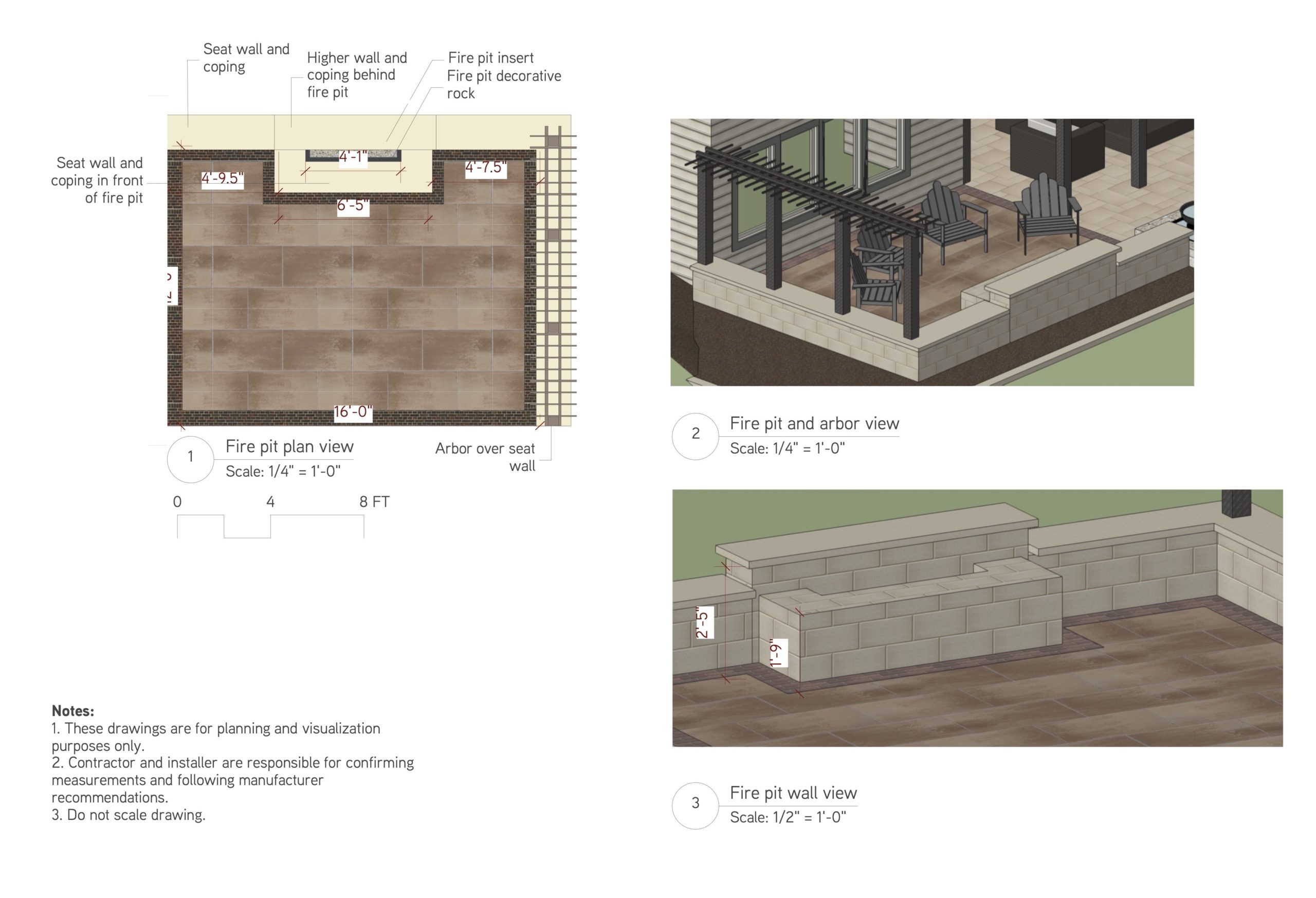
- What should the size and layout be?
An optimal size for the fire pit itself is 36-48” in diameter. This is large enough for a fire but small enough to have conversation across it. We design square, rectangular, and circular fire pits, depending on the spaces they’re going in.
Think about the height, too. If you can build your fire pit space sunken down a little, you’ll have more protection from the wind. Here in Iowa, the wind is a serious thing to think about! Look at your property and see if there are naturally lower areas that could work for a fire pit location, or use retaining walls or seating walls to set your fire pit patio a bit lower.
On a built-in, permanent fire pit, I normally design the fire pit at a height of 12”. Typically, seat walls are 18”, so the fire pit is a little lower than the surrounding seat wall. This 12” height is still low enough for seating when the fire’s not lit (see safety, #1). It’s also a great height for resting your feet when you’re relaxing in an Adirondack chair around the fire.
We love to use coping to tie in materials and create a unified design. In one recent project, we used gorgeous sandstone to highlight the fire pit coping and set it off from the seat wall around it.
Whether you’re using a pre-made, mobile fire pit or an elaborate built-in patio, enjoy your time outside! There’s nothing like fire to bring the party together.
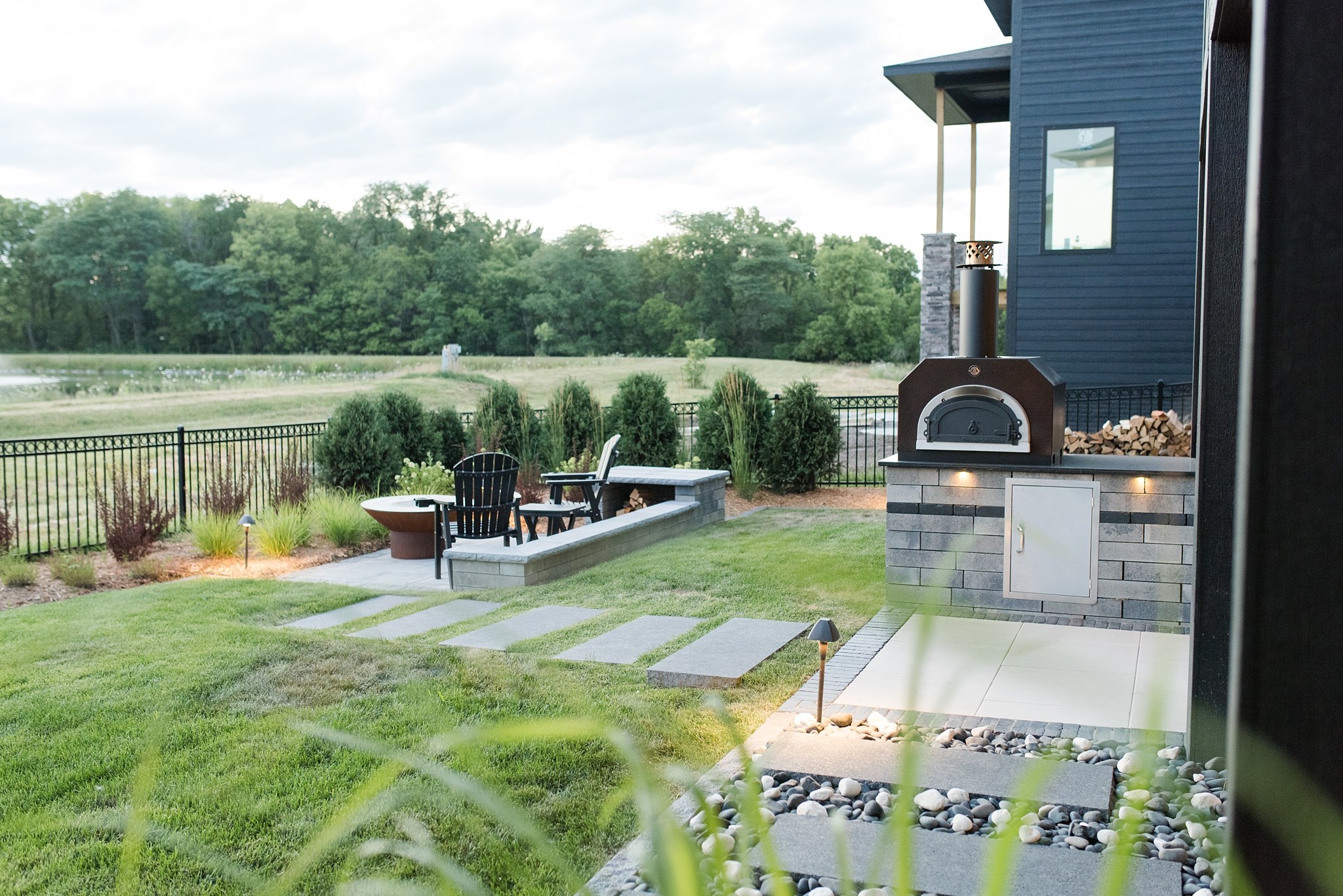
LIke it
pin it
tweet it
email it